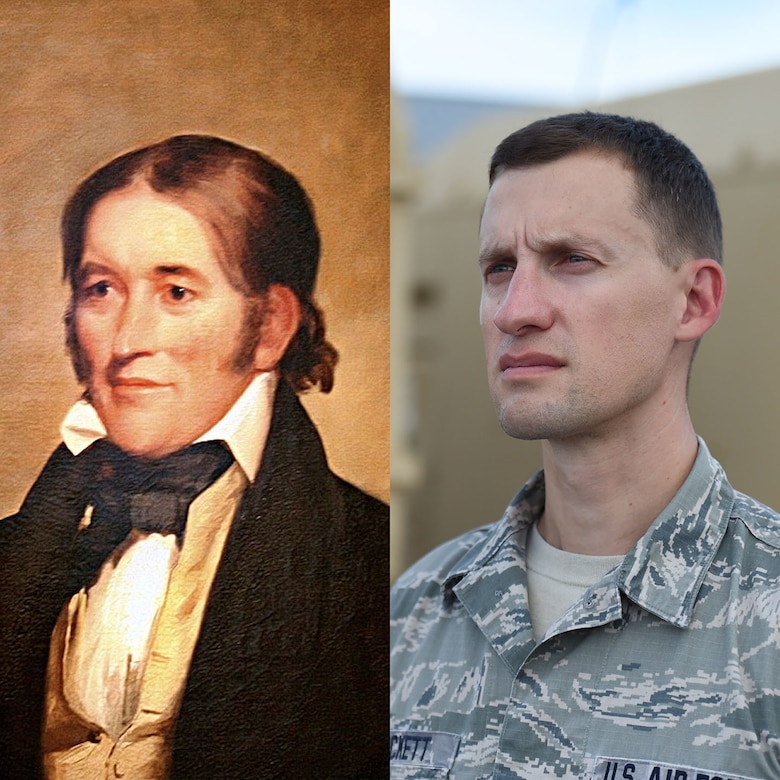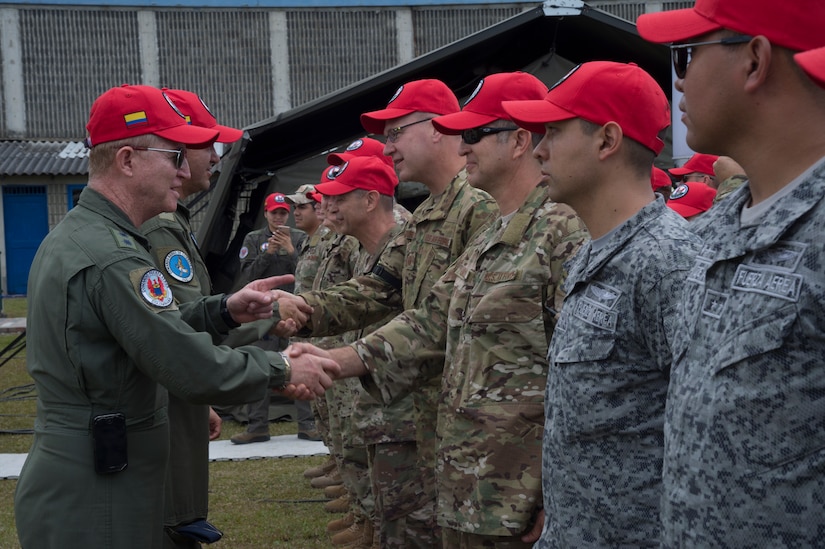By Air Force Staff Sgt. Mike Kelly, 132nd Wing, Iowa Air
National Guard
DES MOINES, Iowa -- At the 132nd Wing here, Air Force Master
Sgt. David "Davy" Crockett, the 132nd Medical Group’s laboratory
noncommissioned officer-in-charge, tends to airmens’ medical needs.
While he may not have been "born on a mountain top in
Tennessee" or "killed him a bar when he was only three,"
Crockett is a direct descendant of the famous American of the early 1800s.
"It’s fun to connect to your past," Crockett said.
"A lot of people nowadays don’t know where they came from, so I’m very
fortunate to have a strong lineage to a historical individual."
Naming the firstborn son of each generation David is a Crockett
family tradition that started when the legendary Crockett was named David after
his grandfather. When it came time to name Crockett though, his parents had a
bit of a dilemma.
"My father wanted to name me David, but my mother was
worried I would get picked on by other kids," Crockett said.
"Ultimately it was my uncle, who is also named David, who convinced them
that everything would be fine."
Fortunately for Crockett, he was not picked on by other
children but did receive added attention. With a very recognizable name,
Crockett grew up often hearing about his ancestor from other kids, usually in
the form of the song, "The Ballad of Davy Crockett" by George Bruns
and Thomas W. Blackburn written for the Disney television mini-series "Davy
Crockett" in 1954.
"Kids, when they saw my last name, would usually just
sing the song," Crockett said. "People later did the same when they
saw the name on my uniform, and then I tell them my first name and lineage and
that would really blow their minds."
Family Pride
Crockett said growing up he was proud to represent his
heritage and didn’t mind the extra attention. He embraced his identity and used
it to educate others on just who his famous ancestor was. Crockett said that
many people now think of Davy Crockett as an American myth or often confuse him
with Daniel Boone.
"I think it’s funny that people think he wasn’t a real
person," Crockett said. "Some people think he was a Paul Bunyan- or
Johnny Appleseed-type mythos creation."
Nevertheless, tall tales and the ability to sell a joke with
a straight face are also traits Crockett displays from his ancestor. Even
though he’s never claimed the ability to grin raccoons out of trees or ride
alligators down streams, Crockett has a reputation for subtle jokes, bad puns and
deadpan humor. His fellow airmen at the 132nd MDG said his ability to spin a
good yarn always keeps them on their toes.
"He constantly keeps everyone on their toes because he
seems so serious when he tells stories, and he is such a good actor that you want
to believe him, even if what he is saying is just crazy and ridiculous,"
said Air Force Senior Airman Danielle Koster, 132nd MDG medic. "Once
he"s tricked you so many times, you don't believe him when he is actually
telling the truth."
The truth is the Crockett name has served the family well
over the generations, leading to chance encounters with astronaut John Glenn,
dinner invitations from actor Fess Parker and job offers from Walt Disney
himself. But despite the fame of his ancestors, the Davy Crockett of the 132nd
Wing said that resiliency is one of key takeaways of his ancestor’s life.
"Davy Crockett failed in a lot of endeavors, almost
died on numerous occasions and even while in Congress wasn’t liked very
much," Crockett said. "But he was resilient and knew how to connect
with people and build good relations with others."
Crockett uses these lessons in his day-to-day life in the
Air National Guard, and he enjoys building up others around him while serving
his country, family and friends.
Whether or not he becomes another American legend someday
remains to be seen.
"Connecting to your heritage as a whole is a really
great thing," Crockett said. "You learn a lot from the past and it’s
cool just to see how connected everyone really is."









